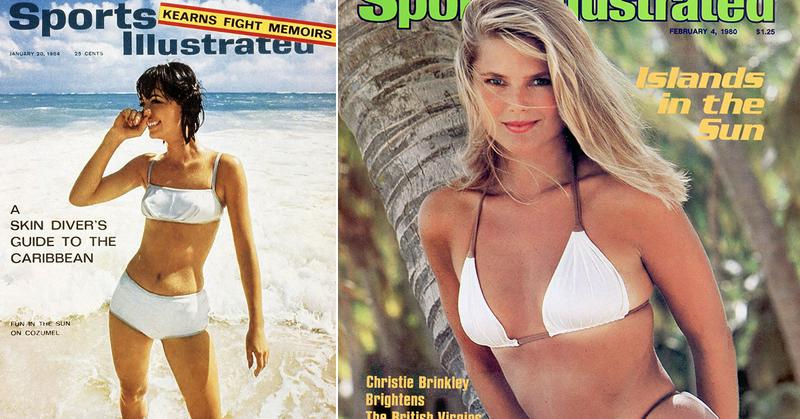Sports Illustrated Swimsuit Issue: The Bikini Invasion Of '64
By | January 9, 2018

The Sports Illustrated Swimsuit Issue had its humble beginnings in 1964 as a five-page feature in the nation's pre-eminent sports magazine. Never mind that it didn't make logical sense for Sports Illustrated to report on women's recreational swimwear, the Swimsuit Issue filled a need. And many household names later -- Cheryl Tiegs, Carol Alt, Christie Brinkley, Elle Macpherson, and others -- it's fair to say that the publication contributed to the supermodel concept.
The Sports Illustrated Swimsuit Issue has been credited not just with creating supermodels, but also with popularizing the bikini as a valid -- and not scandalously European -- beach option. The year 1964 kicked off the British Invasion in music; in subscribers' mailboxes, the Bikini Invasion was underway as well.
'Sports Illustrated' Without Sports

In 1964, Andre Laguerre had a problem. He was the editor of Sports Illustrated, but there were no sports -- nothing great, anyway -- after the new year. At that time, the NFL and AFL had not yet merged, so there was no Super Bowl, nor any playoffs. Every year, by the first week of January, football -- all of it, college and pro -- was over.
That first Swimsuit Issue wasn't a whole issue, nor even a large feature -- it was a cover featuring Babette March in a bikini, and five interior pages. Laguerre had faith in the idea, though, and resolved to go all in, hiring fashion reporter Jule Campbell. The offer to Campbell was simple and appealing. Laguerre said,
How would you like to go to some beautiful place and put a pretty girl on the cover?
Campbell did more than that -- she built the Swimsuit Issue into an influential institution, turning those pretty girls into stars on an unprecedented scale.
Pushing Back On The Twiggy Phenomenon

Babette March, the first cover model, happened to be German, which conflicts slightly with Campbell's self-appointed mission of bringing readers the Californian ideal. At the time, skinny was the prevailing aesthetic, epitomized by the British model Twiggy, but Campbell thought the Sports Illustrated audience would appreciate American girls with a "bigger, healthier" look. (It didn't take a genius to look at the newsstand and see that the most successful lifestyle magazine in the country, Playboy, hadn't made its bones by featuring Twiggy-style waifs.)
Courting Controversy

Campbell created the Sports Illustrated Swimsuit Issue very deliberately, including essays and travel journalism, and always crediting the models by name and the swimwear by brand. It was of course all about the pictures, the beauty, the skin -- you can't disguise page after page of bikini babes with essays and captions -- but these touches allowed the publication to remain above the skin-mag fray. And after all, it only happened once a year.
Still, not everyone loved the Swimsuit Issue. Even that five-page precursor in 1964 drew criticism from at least one reader. W. Frank Caston, of Columbia, S.C., is on record as the first sports fan to pen an angry letter to SI:
I most certainly do not want such pictures coming into my home for my young teen-age son to ogle, much less myself.
The backlash had a clear effect: Sports Illustrated's editors, its publisher, and its other readers loved it. Year after year, Sports Illustrated gleefully printed the best angry letters, making hay off the "controversy" while good-naturedly challenging the average Joe. Look at this killjoy who can't deal with a few girls in bikinis -- you're not square like him, are you?
Cheryl Tiegs Breaks Out

The models in the Swimsuit Issue were always credited, but that didn't make them famous. One model changed all that -- a Minnesotan by the name of Cheryl Tiegs. Tiegs became the first woman to appear on the cover of the Swimsuit Issue more than once, getting the glory spot in 1970, 1975, and 1983. In 1978, a shot of Tiegs in a mesh swimsuit was the sexiest image yet published by the magazine (talk about angry mail from unwilling oglers!); in the same year, Tiegs claimed a spot on teenage boys' walls with the "pink bikini" poster. Tiegs was elbow-to-elbow with other poster prodigies like Farrah Fawcett, Lynda Carter, and Loni Anderson, and Sports Illustrated could reasonably claim it had made her a star. Next up: Christie Brinkley. Then Paulina, and Elle... you know the rest.
